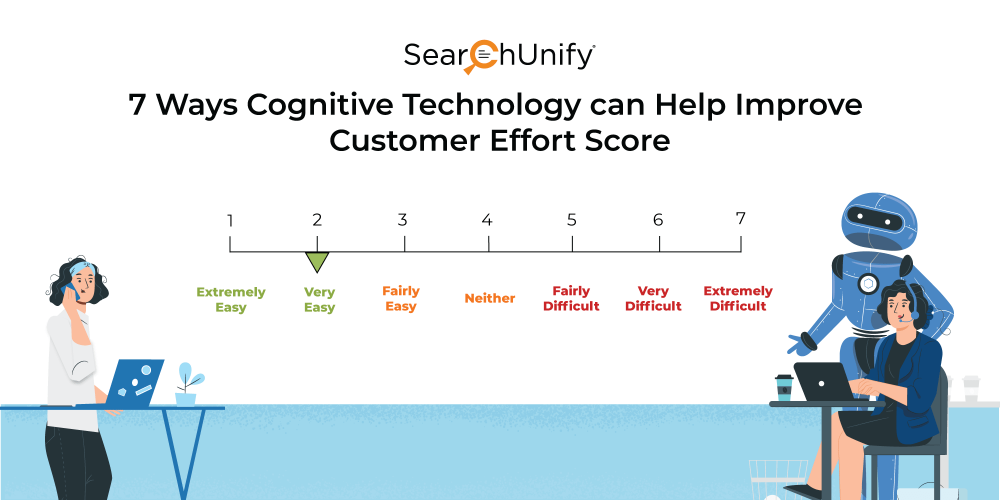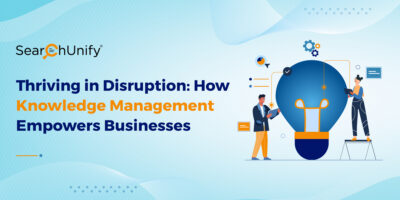
We’re in an era where technology has simplified almost every sphere of our life. Needless to say that people expect brands to leverage it too. And the need for simplicity becomes all the more necessary when it comes to after-sales service.
How quickly brands resolve queries and the efforts customers have to put in for that decides how long they stick to the organization. That makes it imperative for firms to ensure the customers don’t have to struggle to get answers.
Customer Effort Score (CES) helps gauge how easy it is for customers to get the help they need. Let’s take a closer look at CES.
What is CES?
The Customer Effort Score illustrates the amount of effort a customer had to put in to reach the stage of satisfaction after sharing a query. In simple words – it is a measure of ease of reaching out to the brand and getting queries resolved. It has the power to lower your customer churn rate and help foster customer loyalty towards your brand. But how can brands calculate it?
At the end of a support interaction, you must have come across the questions like:
- On a scale of 1 (easy-peasy) to 5 (not so easy), how easy was it to interact with us?
- The effort required for ‘X’ met my expectations. Measure on a scale of 1-5 with 1 being ‘strongly disagree’ and 5 being ‘strongly agree.’
Well, these are just two leaves in the garden. There are various other ways brands calculate this metric.
Why Effort Matters
Customer effort is a powerful indicator of loyalty.
Did you know that the probability of a support interaction leading to disloyalty than loyalty is around four times? And newly disloyal customers not only take their business elsewhere but also speak ill of your brand.
How can one service interaction cause all this trouble? Well, Gartner says customer effort is to be blamed. A staggering ninety-six percent customers with high-effort support interactions become disloyal as compared to nine percent with a low-effort service.
By bringing down customer effort, service organizations can interact better. Additionally, it offers a myriad of benefits like:
- Improves NPS: Multiple pleasant experiences helps in stimulating a positive word-of-mouth, which translates into better NPS.
- Builds Lasting Relationships: When a customer gets the help they need with minimum efforts, they remain happy. This builds a strong rapport which then pumps up the LTV of the customer.
- Lowers Cost: As the customer finds what they need effortlessly, it saves a lot of time and money which would otherwise be spent on multiple calls, escalations, and switching of channels.
- Increases Employee Retention: When the support engineers are able to resolve cases and leave customers content, the job satisfaction improves by leaps and bounds. This goes on to retain them for the long haul.
How to Improve CES with Cognitive Search
The new-age customer looks forward to a blazing-fast response at a speed of light when they put their queries. So, in the current scenario where technology allows you to actually attain the speed of light responses, how is Artificial Intelligence or Machine Learning empowering this brand-enhancing metric? The new-age customers expect blazing fast responses to their queries. Cognitive search enables you to deliver that and more. Let’s see how it contributes to our brand-enhancing metric.
- Responding through the preferred channel of communication
Cognitive technology customizes a user’s experience by fitting exactly how the user wants it. How? The technology allows customers to stay in the channel that most suits them or through which they have communicated the query. For example – social media, emails, and even WhatsApp personal chats. - Advent of chatbots fueled by enterprise search
Providing round-the-clock global support can be hard. And when you consider the large customer base of enterprises, it becomes clear that some clients might end up waiting for painstakingly long periods. This is where chatbots weigh in and provide timely responses. They effortlessly deflect L1 queries by providing solutions to a lot of customers, thus reducing the caseload for your support team. - Intelligent routing powered by AI
The going gets tough when your support agents ask customers to wait as they handover the case to the “correct person”. This time can be saved by redirecting the case to the right agent the moment it reaches the support organization. A cognitive engine uses AI to effectively route every case to the best available support engineer based on skills and experience. This helps minimize the waiting time, which in turn improves FCR and MTTR. - Leveraging the customer journey insights
Always having to give out your details might be the last thing that you wish to spend your time on. The cognitive search engines relieve the customers from the burden of reiterating the same details every time they reach out for help. It also provides their complete journey including purchase history, previous searches, visited pages, etc. to help the support engineers see what the customer has already tried. This empowers the support champions to respond with a better solution. - The self-service portals
A lot of issues only require basic troubleshooting, something self-service portals can help with. But what if the customer doesn’t check them? Cognitive search indexes FAQs, documentation, community threads, etc. and populates relevant content anywhere. This improves knowledge discovery and drives self-service success. - Proactive assistance, just in time
One of the best ways to support your customers is by anticipating what they might need and when. This allows you to help them before they even ask for it. Cognitive search comes with potent machine learning models that analyze user behavior along with purchase history to identify any possible hurdles the users might face. This enables you to recommend pertinent knowledge and keep the clientele delighted! - Anticipating user needs and providing suggestions
There are times where a customer cannot put a finger on what they might need next due to less information to their access. ML records data of a million users and draws inferences that help to suggest the customer other services they might need. This comes handy to lower the customer’s efforts.
Want to know more about how you can augment CX and EX?
Cognitive search not only offers both but also adds a lot of capabilities that make your customers’ and employees’ lives better. If you’d like to know more about enhancing CX & EX, then check our on-demand webinar on the same.


















